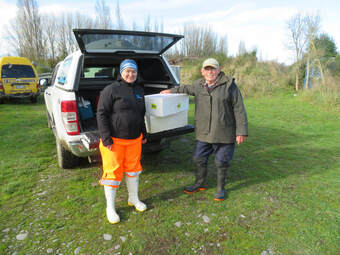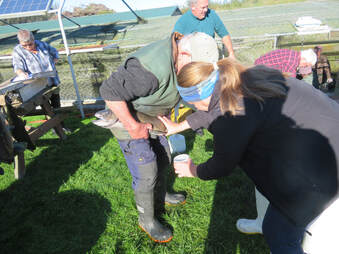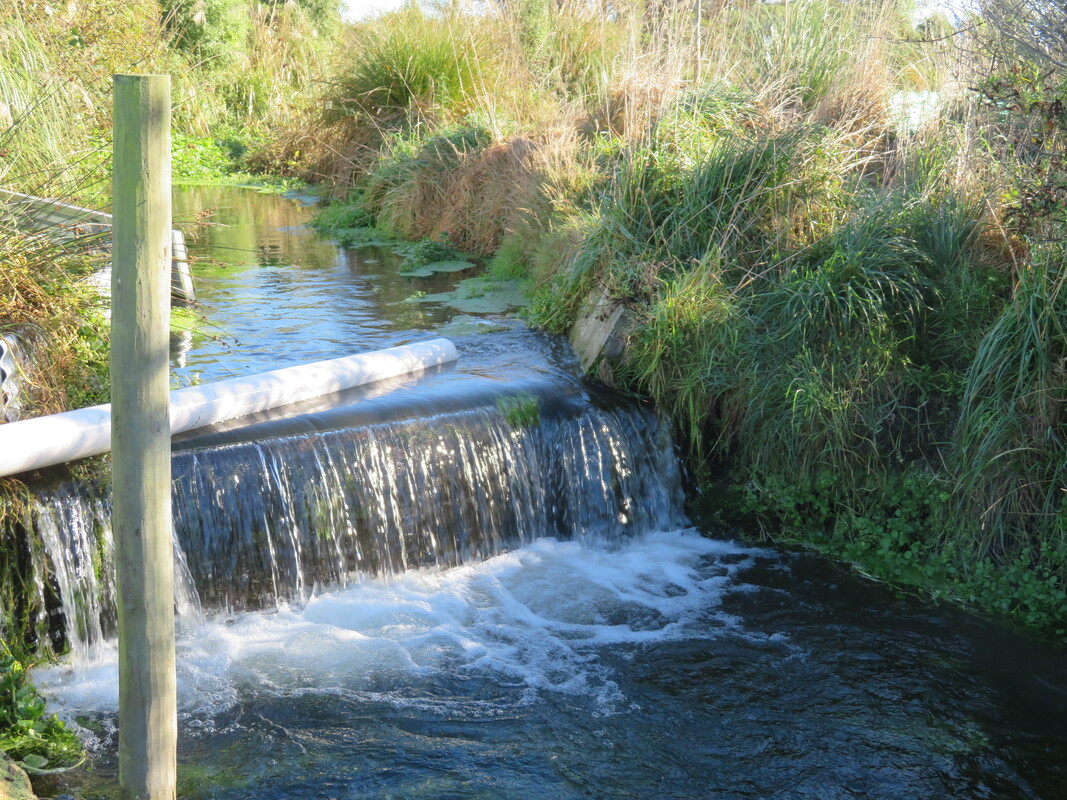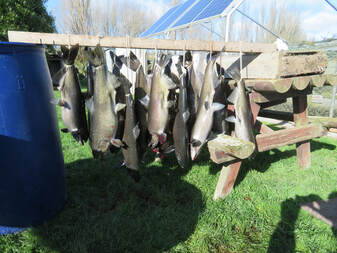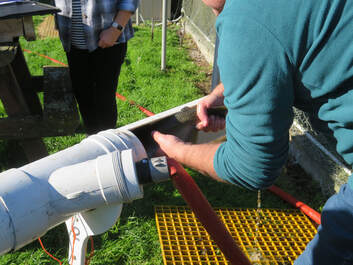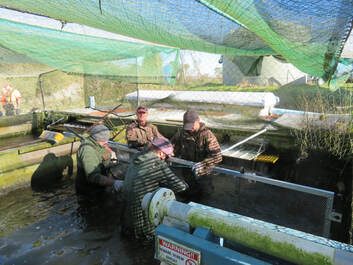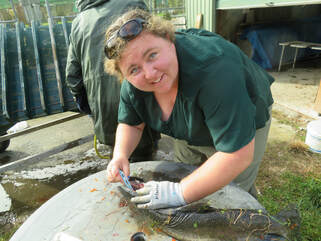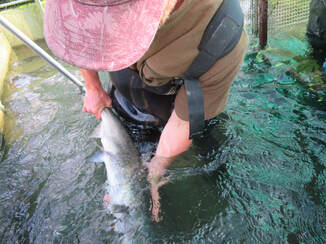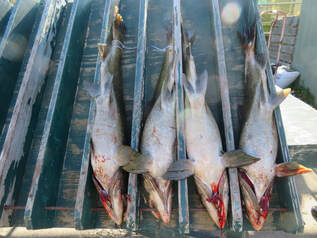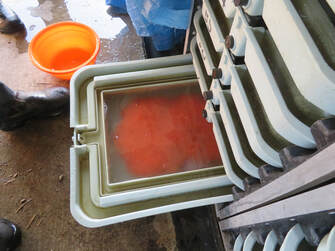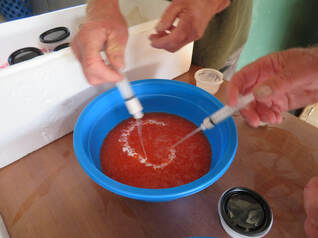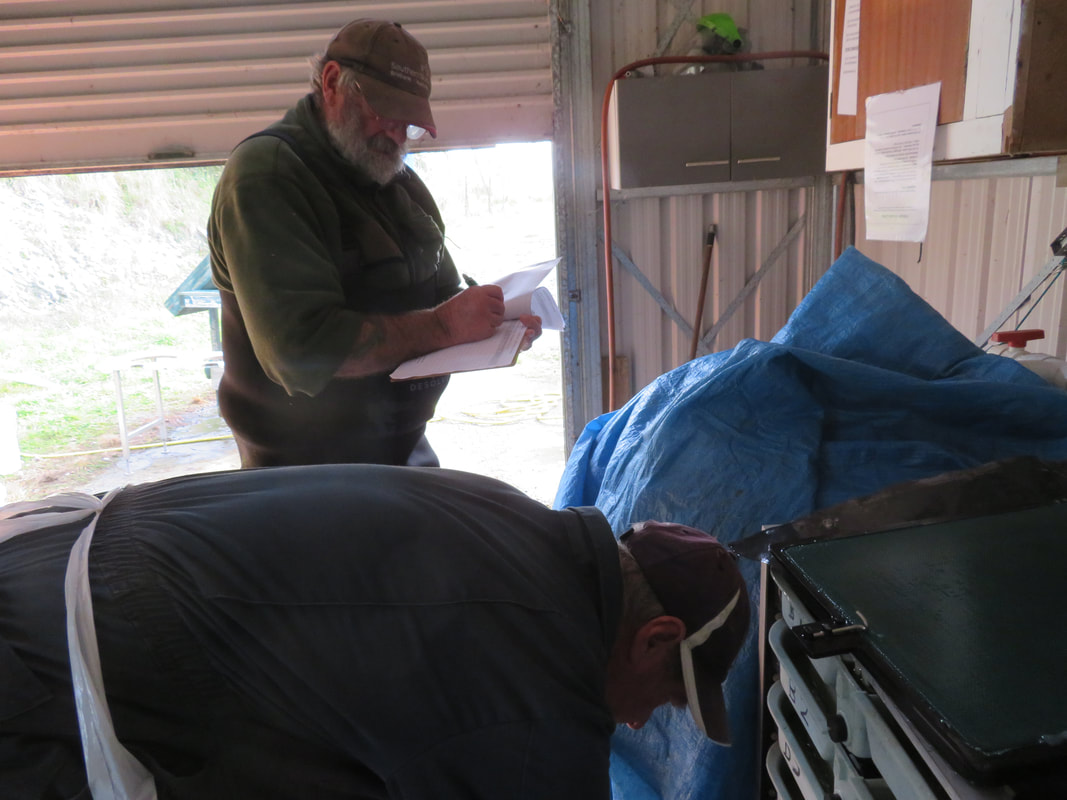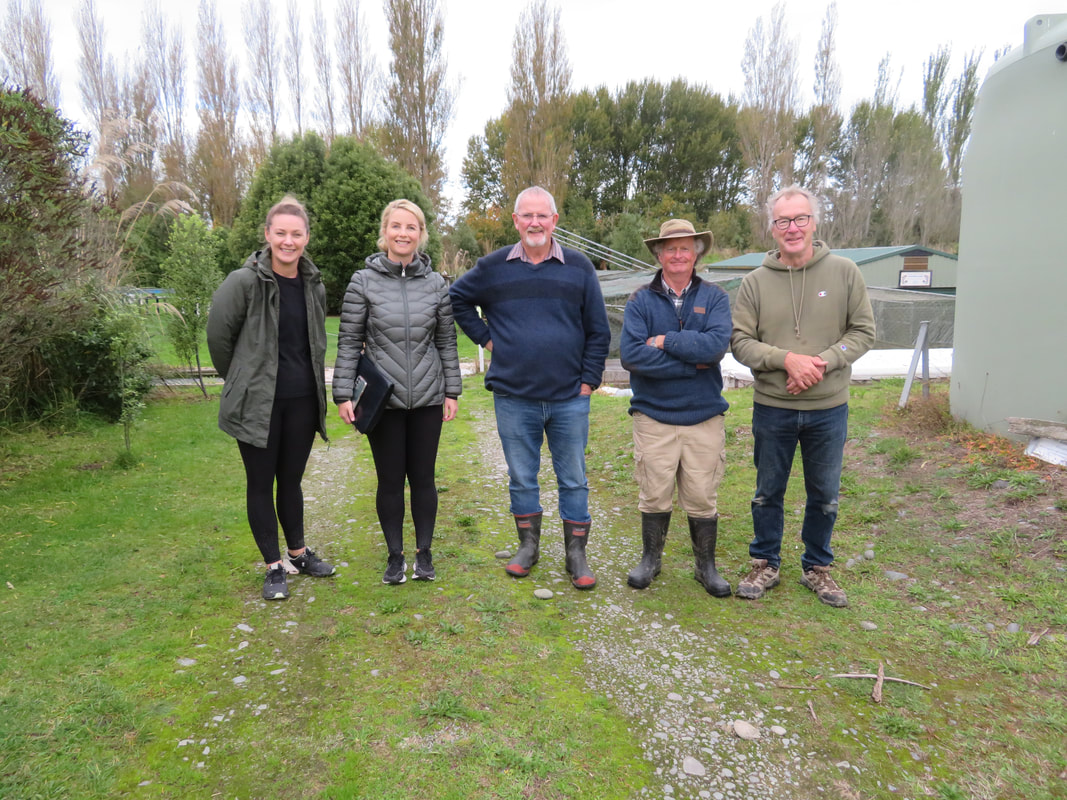|
The 2023 spawning season at the hatchery is now officially over.
Approx 30 fish, returnees to the hatchery, and 20 fish from our Land based broodstock were processed to produce a little over 100,000 fertilized eggs. These are now all under incubation. Egg picking (removal of dead eggs) will commence in the next week. Strict protocols have been observed and each batch of eggs have been recorded in terms of their breeding group. This ensures that the only fish used as future broodstock are derived from wild stock. This year we were happy to help the Otago Harbour hatchery get back on its feet by supplying them with approx 50,000 eggs and milt. This transfer was organized by the respective Fish and Game organizations. All adult fish that were not required have been returned to McKinnons Creek. We are still holding 37,000 rising one year old fish that will soon be fin clipped and released back into the River. All in all it has been a very satisfying year and a massive thanks must go out to all those who have helped in any shape or form. From our growing number of volunteers to those who generously donate and also our many supporters. The environment around the hatchery is now looking better than ever with the thousands of native plants that have been planted, and the willows and scrub removed. We have had visits from ECan, DOC, local Iwi, and various other groups who have all been impressed with the hatchery and the environmental improvement. Click on photos to enlarge. We were very sad to loose one of our stalwarts from our team late last month. Tim Wakefield was a volunteer in our group whose contribution to the hatchery will be sorely missed. RIP Tim.
0 Comments
The annual breeding program is with us once again. This is a very busy time at the hatchery because it entails stripping eggs from ripe female fish, fertilizing the eggs with milt from selected males, and incubating them in specially designed incubation towers. The whole process is labour intensive and has to be done in a professional manner if good results are to be achieved. Dryness of all receptacles is essential and hygiene is a must. There are strict protocols to be observed and the make up and history of each batch of eggs is recorded. So far this year we have processed 20 fish and have nearly 45,000 eggs under incubation. Our goal this year is the same as last year, 100,000 eggs. While we could do more, this is about the limit our team of volunteers can manage. The hatchery relies solely on donations and grants for its funding and recently put out a call for donations from supporters to help fund a shortfall in our fish food supplies. Our request was well received and we thank all those who contributed. Feeding fish is not a cheap exercise at at around $3500.00 USD per metric ton, it is our most expensive factor of the whole operation. Thank you one and all again.
Recently we had a film crew at the hatchery, making a documentary about the Rangitata river and the communities around it. The hatchery features in the film and should be on TV in the near future. |
Archives
April 2024
Categories |

